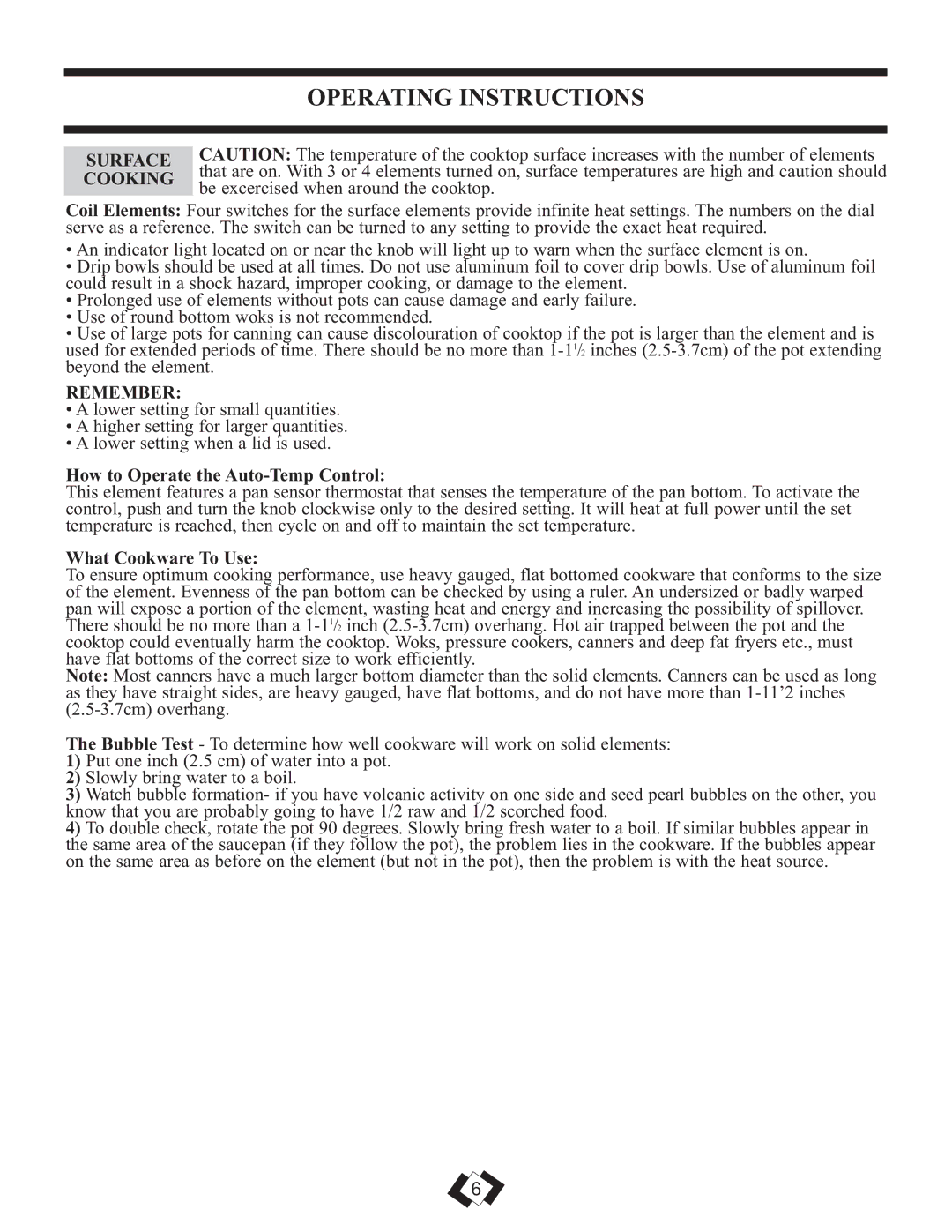
OPERATING INSTRUCTIONS
SURFACE | CAUTION: The temperature of the cooktop surface increases with the number of elements | |
that are on. With 3 or 4 elements turned on, surface temperatures are high and caution should | ||
COOKING | ||
be excercised when around the cooktop. | ||
|
Coil Elements: Four switches for the surface elements provide infinite heat settings. The numbers on the dial serve as a reference. The switch can be turned to any setting to provide the exact heat required.
•An indicator light located on or near the knob will light up to warn when the surface element is on.
•Drip bowls should be used at all times. Do not use aluminum foil to cover drip bowls. Use of aluminum foil could result in a shock hazard, improper cooking, or damage to the element.
•Prolonged use of elements without pots can cause damage and early failure.
•Use of round bottom woks is not recommended.
•Use of large pots for canning can cause discolouration of cooktop if the pot is larger than the element and is used for extended periods of time. There should be no more than
REMEMBER:
•A lower setting for small quantities.
•A higher setting for larger quantities.
•A lower setting when a lid is used.
How to Operate the Auto-Temp Control:
This element features a pan sensor thermostat that senses the temperature of the pan bottom. To activate the control, push and turn the knob clockwise only to the desired setting. It will heat at full power until the set temperature is reached, then cycle on and off to maintain the set temperature.
What Cookware To Use:
To ensure optimum cooking performance, use heavy gauged, flat bottomed cookware that conforms to the size of the element. Evenness of the pan bottom can be checked by using a ruler. An undersized or badly warped pan will expose a portion of the element, wasting heat and energy and increasing the possibility of spillover. There should be no more than a
Note: Most canners have a much larger bottom diameter than the solid elements. Canners can be used as long as they have straight sides, are heavy gauged, have flat bottoms, and do not have more than
The Bubble Test - To determine how well cookware will work on solid elements:
1)Put one inch (2.5 cm) of water into a pot.
2)Slowly bring water to a boil.
3)Watch bubble formation- if you have volcanic activity on one side and seed pearl bubbles on the other, you know that you are probably going to have 1/2 raw and 1/2 scorched food.
4)To double check, rotate the pot 90 degrees. Slowly bring fresh water to a boil. If similar bubbles appear in the same area of the saucepan (if they follow the pot), the problem lies in the cookware. If the bubbles appear on the same area as before on the element (but not in the pot), then the problem is with the heat source.
6
